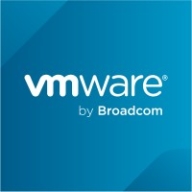

Cloudify and VMware Tanzu Platform are competing products in the cloud management and orchestration space. VMware Tanzu Platform often has the upper hand due to its expansive feature set.
Features: Cloudify offers open-source flexibility, quick integration with existing systems, and a streamlined orchestration workflow. VMware Tanzu Platform provides robust microservices management, Kubernetes scalability, and enhanced security features.
Room for Improvement: Cloudify could improve by enhancing its user interface, offering more comprehensive enterprise support, and expanding its feature set beyond basic orchestration. VMware Tanzu Platform could work on simplifying its complex deployment process, reducing costs, and streamlining its integration with non-VMware products.
Ease of Deployment and Customer Service: Cloudify boasts an easy deployment process, supported by detailed documentation and community help. VMware Tanzu Platform offers professional support services, which accommodate its complex setup and provide a managed experience for users.
Pricing and ROI: Cloudify presents a lower initial cost, appealing to budget-conscious businesses seeking quick returns. VMware Tanzu Platform, with its higher price, promises greater long-term ROI through its comprehensive solutions and advanced capabilities.
| Product | Market Share (%) |
|---|---|
| VMware Tanzu Platform | 0.9% |
| Cloudify | 1.7% |
| Other | 97.4% |


| Company Size | Count |
|---|---|
| Small Business | 3 |
| Large Enterprise | 6 |
| Company Size | Count |
|---|---|
| Small Business | 10 |
| Midsize Enterprise | 3 |
| Large Enterprise | 10 |
Cloudify is an open-source orchestration-first cloud management platform. The solution allows applications to efficiently run across multiple cloud or data center platforms for premium multi-cloud infrastructure automation and orchestration. It provides infrastructure automation using environment as a service (EaaS) technology to deploy and continuously manage any cloud, private data center, or Kubernetes service from one central point while leveraging existing toolchains.
Cloudify Product Highlights
Cloudify Features
Cloudify has many valuable key features. Some of the most useful ones include:
Cloudify Benefits
There are many benefits to implementing Cloudify. Some of the biggest advantages the solution offers include:
VMware Tanzu Platform is designed for cloud-native development and management of Kubernetes, CI/CD processes, microservices, and containerized workloads. It supports deployments both on cloud and on-premises, providing centralized management via Mission Control.
VMware Tanzu Platform offers seamless integration with vSphere, ESX, and vSAN, supporting centralized cluster management and lifecycle management. The platform provides a GUI for monitoring CI/CD pipelines and network policies, enhancing multi-tenancy and Day 2 operations. Users can easily manage Kubernetes clusters, monitor applications, and integrate with tools such as GitHub, GitLab, Cloud Foundry, and Azure. It ensures compliance and security for service providers, financial institutions, and businesses.
What are the key features of VMware Tanzu Platform?
What benefits and ROI should users look for in VMware Tanzu Platform reviews?
Industries such as financial institutions, service providers, and businesses requiring rigorous compliance and security deploy VMware Tanzu Platform. These entities benefit from centralized management, streamlined DevOps processes, and integrated tools, enhancing their capabilities in cloud-native developments and containerized workloads.
We monitor all Cloud Management reviews to prevent fraudulent reviews and keep review quality high. We do not post reviews by company employees or direct competitors. We validate each review for authenticity via cross-reference with LinkedIn, and personal follow-up with the reviewer when necessary.